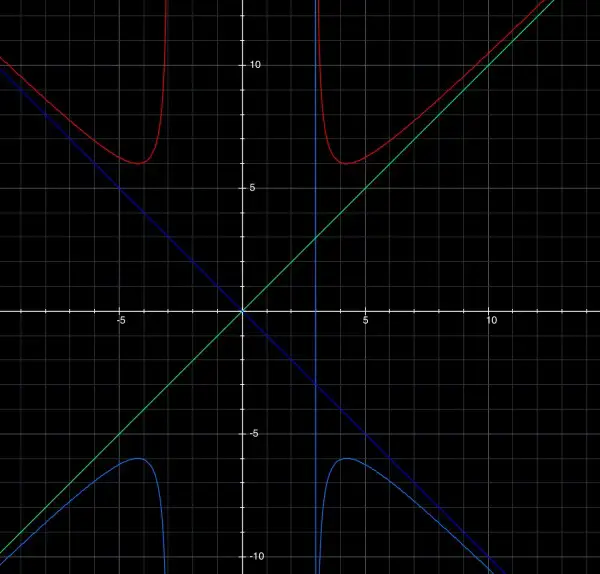The curve does not exist for -3<x<3 because there can be no solutions for y when x^2<9.
Because of the presence of x^2 and y^2 the curve is essentially reflected in all quadrants. If we examine QI only we have the same patterns reflected in the other quadrants. x=-3 and x=3 are asymptotes.
As x gets larger, the constant 9 becomes more insignificant and y^2 becomes x^2, in other words, the curve in QI has an asymptote y=x, which is reflected in all the other quadrants. So we know the curve is trapped between the vertical asymptote and the line y=x.
(2ydy/dx)(x^2-9)+2y^2x=4x^3 is the derivative. When dy/dx=0, there is a turning point. y^2=2x^2. That is, x^4/(x^2-9)=2x^2. x^4=2x^4-18x^2; x^2=2x^2-18; x^2=18, x=3sqrt(2) and y^2=36, so y=6. In QI then, there is a turning point at (3sqrt(2),6). This is reflected in each quadrant. This is a minimum (in QI) because the curve is trapped between the above asymptotes. There is enough information now to trace the curve(s). The asymptotes resemble a cross intersected by vertical lines. The asymptote in QI and QIV has been drawn in to illustrate how close the curve comes to it.
